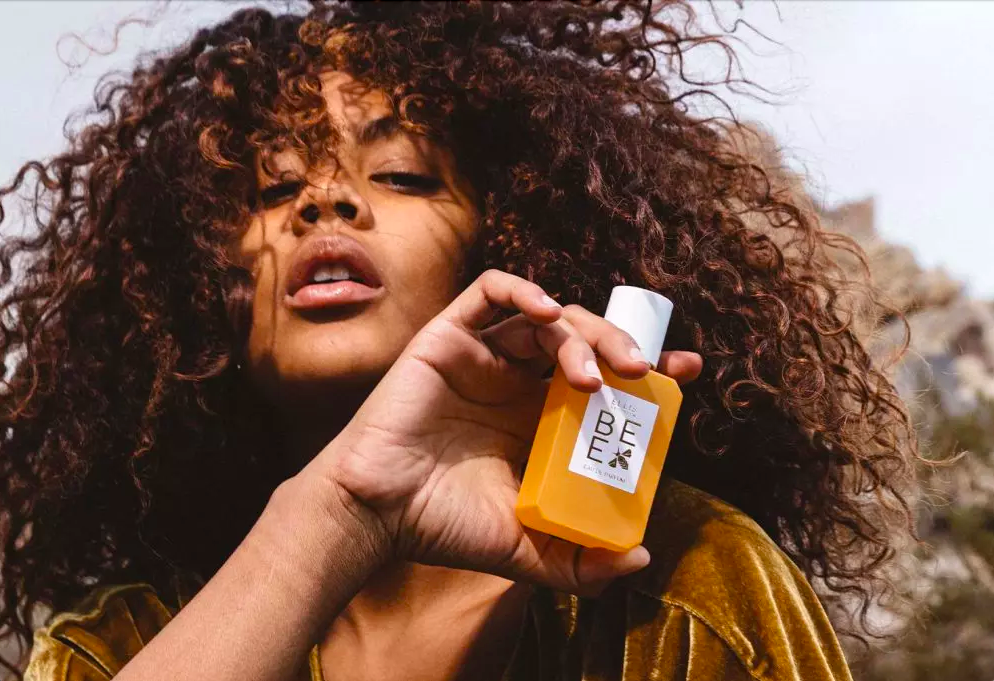The Sephora Clean Beauty guidelines are ushering in a new era of skincare. But what does it mean exactly? Here’s everything you need to know, plus the brands to shop in the Clean and Planet Positive categories.
There is perhaps no greater irony of the last half-century than the promise of the beauty and personal care industries. Long shielded by proprietary formulas that kept consumers from knowing what exactly is in the products they’re buying, manufacturers have historically loaded up the product claims of health and beauty but contain instead ingredients known to be toxic to human health and the environment.
Lawsuits levied against brands like the formaldehyde-laden Brazilian Blowout and Johnson & Johnson’s Baby Powder are two prime examples of industry promises gone wrong. There are scores of ingredients that are now outlawed in countries including the E.U. bloc, for their links to health and environmental issues. But many are still pervasive in the U.S. market.
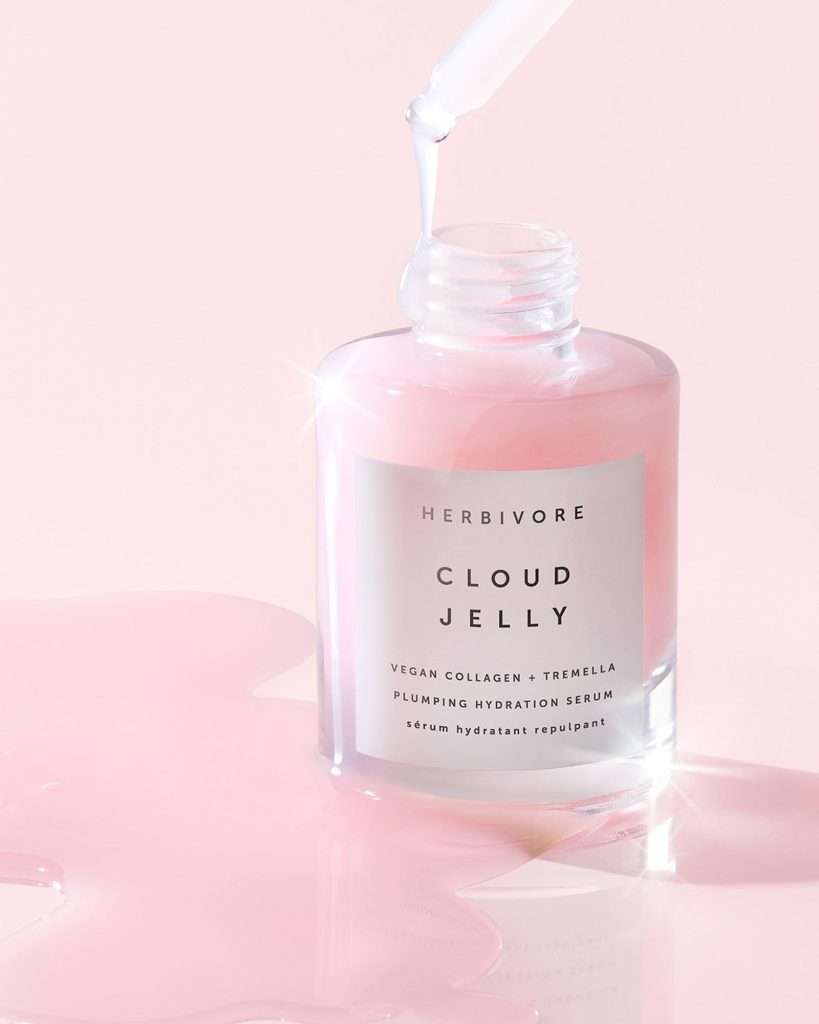
But some companies are stepping up to make change. One key player: Sephora and its Clean at Sephora category that helps consumers know exactly what’s in a product, or, more accurately, what isn’t.
Sephora is the beauty retail category leader, with sales surpassing $5 billion in the U.S. in 2020; globally, its sales are more than $10 billion. But despite its large footprint, it’s not the first beauty-focused retailer to lean into clean beauty ingredients. The Detox Market and Credo Beauty have been holding court in the space for over a decade—weeding out the cleanwashing from the clean ingredient labels. Amazon has also upped its categorizations to highlight clean beauty products. Sephora’s closest competitor though is the U.S.-based Ulta. The Conscious Beauty at Ulta Beauty category houses clean, cruelty-free, vegan, and sustainably packaged products.
And then there’s Whole Foods Market, which got the ball rolling in the category when it banned more than 100 ingredients from its personal care and body care product offerings more than a decade ago.
Now at more than 180 ingredients, Whole Foods says that it engages with many of its beauty and personal care suppliers and participates in the journey with them. “We help make alliances with our foundations, advise on our ingredient standards to improve formulations, onboard smaller regional and local suppliers to help them grow their brands and help showcase innovative ingredients and formulations.”
What is Clean at Sephora?
Launched in 2018, Clean at Sephora is a visible mark on products sold via the beauty store’s website that allows consumers to easily see that the product they’re viewing meets Sephora’s clean beauty criteria.
The Clean at Sephora category only features products that are free from more than 50 ingredients that have been linked to human health issues. These include parabens, phthalates, mineral oil, formaldehyde, sulfates, BHA (butylated hydroxyanisole), ethanolamines DEA/TEA/MEA/ETA, toluene, carbon black, mercury and mercury compounds, aluminum salts, lead, and lead acetate, among others.
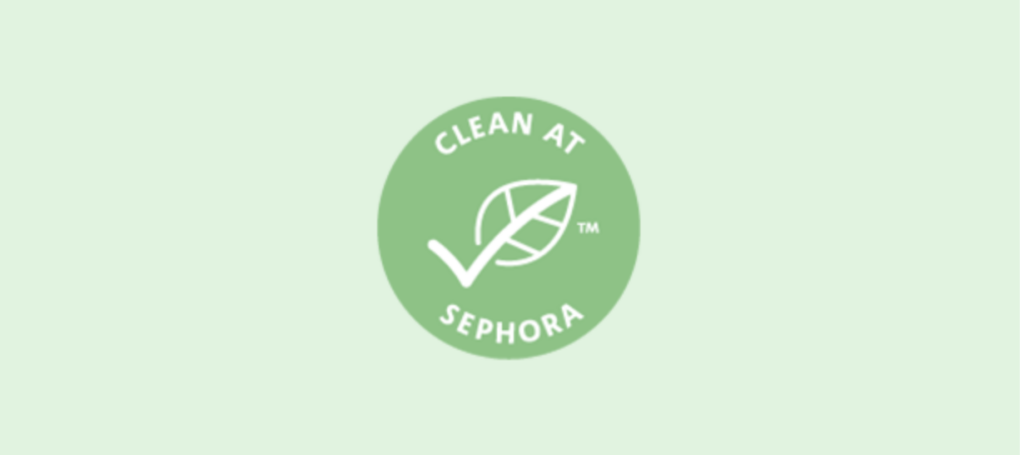
By doing the vetting for these questionable ingredients, Sephora hopes to help ease consumer concerns and smooth the shopping experience.
“This initiative was first and foremost inspired by our clients and the very apparent opportunity for Sephora to come in as an educational resource to those looking for help navigating the vast and growing world of clean beauty,” Artemis Patrick, Chief Merchandising Officer at Sephora, said when the category launched in 2018.
“Together with our brands, industry experts, external council—as well as feedback from our clients—we’ve sought to help demystify the category and bring clarity to those clients who desire more transparency in beauty, particularly in the ingredients they might like to avoid,” Patrick said. “It’s not about a line in the sand, for us it is about being transparent and providing brand options that deliver results. While this isn’t necessarily a new idea, it is most certainly relevant for our clients and is a starting point in an exciting and fast-moving innovative category.”
Qualifying for the Clean at Sephora label
According to Cindy Deily, a VP of skin care merchandising at Sephora, brands that want to qualify for the Clean at Sephora seal have to conduct a thorough audit of each and every one of their formulas to ensure none of the ingredients on the companies’ “formulated without” list are being used. “Additionally, they have to agree that none of their future formulas will contain any of these ingredients and have to demonstrate transparency in the form of a public-facing standard and point of view around formulation,” she told MBG in 2019.
Deily says the landscape can be challenging for a variety of reasons that include regulation, terms, or claims that are widely used by mass and prestige. “Clean at Sephora allows us to define what clean means to us—in turn, creating a point of view that our clients can navigate, learn from, and shop with a sense of comfort that the work has been done for them,” she said.
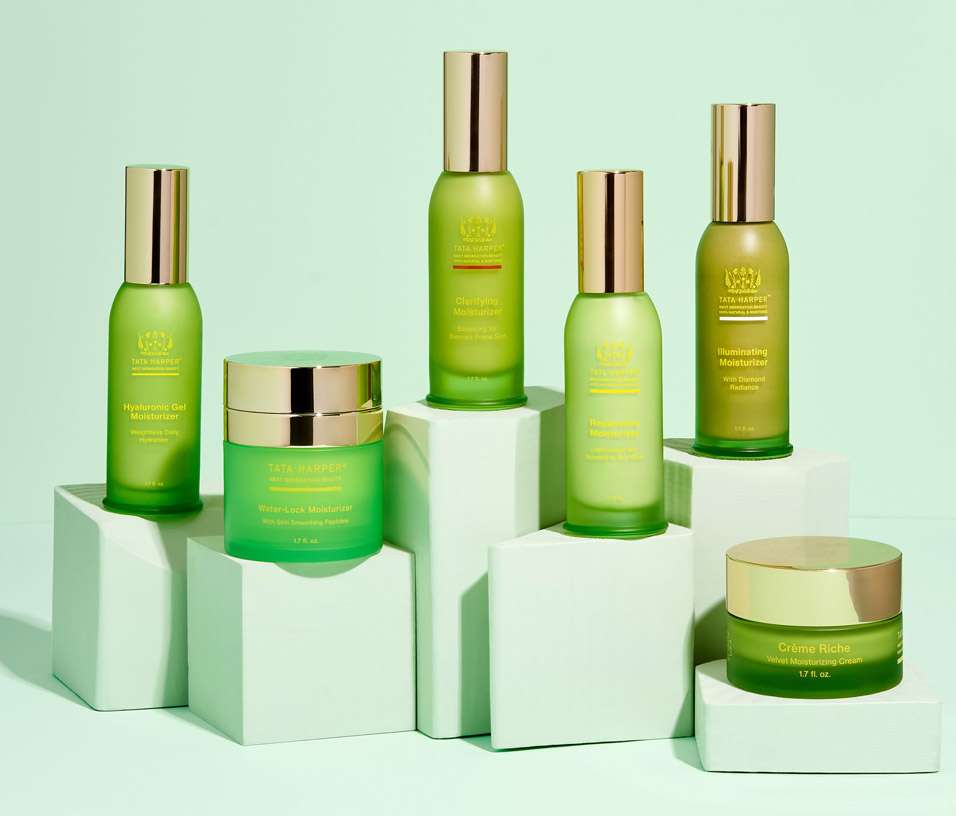
“We continually educate ourselves through our relationships with industry leaders. Technology and innovation are increasing so rapidly, which is making clean beauty reformulations occur faster and creating more accessible new clean formula innovations. We’re learning every day, and we expect our program and criteria to continue to evolve to meet or exceed the wants and needs of our clients, as well as keeping pace with what science and innovation make possible.”
Platforms like Novi are helping. Founded by Kimberly Shenk, a former clean beauty brand entrepreneur herself, Novi is connecting brands, suppliers, and retailers to make access to clean ingredients and packaging easier than ever.
“The growing need for brands to find and source reliable materials that have been independently vetted by Novi for more than 100 sustainability standards has also led to significant growth in our supplier partners, big and small,” Shenk says.
Clean at Sephora banned ingredients
| Ingredient or Category: | Specific Requirement or Ingredient Names (does not include exhaustive ingredient lists): |
| Sulfates – SLS + SLES | |
| Parabens | |
| Formaldehydes | |
| Formaldehyde-releasing agents | |
| Phthalates | |
| Mineral Oil | |
| Retinyl Palmitate | |
| Oxybenzone | |
| Coal Tar | |
| Hydroquinone | |
| Triclosan | |
| Triclocarban | |
| Undisclosed synthetic fragrances* | * Products can be formulated with disclosed synthetic fragrances that meet the following two criteria: (1) the synthetic fragrances do not include any of the ingredients listed in numbers 1 through 12 above and (2) the synthetic fragrances are at a concentration below 1% of the total formula. |
| Acrylates | Ethyl acrylate, ethyl methacrylate, methyl methacrylate, butyl methacrylate, hydroxypropyl methacrylate, tetrahydrofurfuryl methacrylate, trimethylolpropane trimethacrylate |
| Aluminum Salts | |
| Animal Oils/Musks/Fats | |
| Benzophenone + Related Compounds | |
| Butoxyethanol | |
| Carbon Black | |
| Lead/Lead Acetate | |
| Methyl Cellosolve + Methoxyethanol | |
| Methylchloroisothiazolinone & Methylisothiazolinone | |
| Mercury + Mercury Compounds (Thimerisol) | |
| Insoluble Plastic Microbeads** | ** This prohibited ingredient applies to products that are meant to be rinsed off |
| Resorcinol | |
| Talc*** | *** Talc that is free of any asbestos can be used in the formulation provided that Brand conducts testing to ensure that talc is free of any asbestos. |
| Toluene | |
| Butylated hydroxyanisole (BHA) | |
| Butylated hydroxytoluene (BHT) that is 0.1% or more of total formula | |
| Ethanolamines DEA/TEA/MEA/ETA | |
| Nanoparticles**** | **** As defined by the European Commission (http://ec.europa.eu/growth/sectors/cosmetics/products/nanomaterials_en) |
| Petrolatum and Parrafin | USP grade only |
| Phenoxyethanol | Must be 1% or less of total formulation |
| Polyacrylamide & Acrylamide | |
| Styrene | Bromostyrene, Deastyrene/acrylates/dvbcopolymer, sodium styrene/divinylbenzene, copolymer, styrene oxide, styrene |
| 1,4 Dioxane | Must comply with the thresholds below in final formulas: 10 or less for products that are meant to be rinsed off, wiped off or removed;3ppm or less for products that are meant to remain on the skin |
Clean at Sephora lawsuit
In November 2022, Lindsay Finster filed a proposed class action lawsuit in the U.S. District Court for the Northern District of New York. Finster alleged that “Clean at Sephora” program included products that contained ingredients “inconsistent with how consumers understand” the term “clean.”
The suits allege that customers were misled about the ingredients allowed in the program and that some posed human health risks.
But Sephora disputes the claim, saying all qualifying Clean at Sephora products must be formulated without certain controversial ingredients including parabens, sulfates SLS and SLES, phthalates, and formaldehyde, among others. The plaintiff alleges that the “Clean at Sephora” program “misleads consumers into believing that the products being sold are ‘natural,’ and ‘not synthetic’”’ and to paying a price premium based on this understanding.”
On February 2, 2023, Sephora moved to dismiss. On March 2, 2023, Sephora filed a reply in support of its motion to dismiss class action claims that called the Clean at Sephora program false and misleading.
Current Clean at Sephora qualifying brands
The most current Clean Beauty Brands at Sephora include the following:
- Adwoa
- Alpha-H
- Ami Colé
- amika
- bareMinerals
- BeautyBio
- belif
- boscia
- Bread Beauty Supply
- CAY SKIN
- CLEAN Reserve
- Community Sixty-Six
- COOLA
- Dae
- Dr. Dennis Gross Skincare
- Drunk Elephant
- Edible Beauty
- Fable and Mane
- FaceGym
- Fenty Skin
- First Aid Beauty
- Flora + Bast
- Floral Street
- Freck
- fresh
- Gisou
- goop
- HAUS LABS BY LADY GAGA
- Heretic
- Ilia
- Indie Lee
- INNBeauty Project
- Isle of Paradise
- Josie Maran
- JVN
- Kiehl’s Since 1851
- Kopari
- KORA Organics
- KORRES
- Kosas
- LASHFOOD
- LAVANILA
- LAWLESS
- Lilah B.
- Lord Jones
- LYS Beauty
- Maison Louis Marie
- MERIT Beauty
- Mango People
- MILK MAKEUP
- Moon Juice
- Naturally Serious
- Nécessaire
- The Nue Co.
- Olaplex
- OLEHENRIKSEN
- Original & Mineral
- Origins
- Playa
- PHLUR
- Primera
- Qhemet Biologics
- Rahua
- Reverie
- rms beauty
- Rose Inc.
- Rosebud Perfume Co.
- Rossano Ferretti Parma
- Saie
- Saint Jane Beauty
- Saturday Skin
- SKINFIX
- SKYLAR
- Sobel Skincare RX
- stackedskincare
- Summer Fridays
- Supergoop!
- Tatcha
- The INKEY List
- Together Beauty
- Tower 28 Beauty
- Vitruvi
- Volition Beauty
- Wander Beauty
- Westman Atelier
- Wishful
- YUNI
Clean + Planet Positive at Sephora
But Clean at Sephora continues looking one step ahead of the category. Last year, the French-owned beauty retailer added sustainability metrics to the Clean at Sephora category, called Clean + Planet Positive. Its aim is to help consumers who want the best of all worlds: products without harmful ingredients for them or the planet.
In order to obtain the Clean + Planet Positive at Sephora seal, brands must satisfy four criteria: climate commitment, sustainable sourcing, responsible packaging, and environmental giving.
For climate commitment, this includes operations that are carbon neutral, run on renewable energy, or have emissions reductions in place.
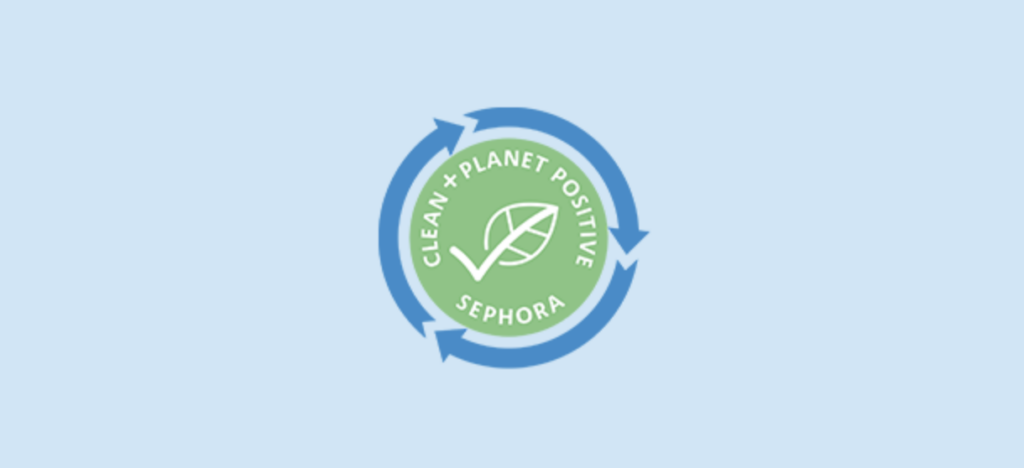
Sustainable sourcing means no microplastic—one of the leading contributors to ocean pollution. It also means sustainably sourced mica and sustainable or Fair Trade-sourced palm oil.
Single-use packaging is out for the responsible packaging criteria, and packaging should be as recyclable as possible. To earn the seal, brands need to use at least 30 percent post-consumer recycled content in half of their packaging.
To satisfy the environmental giving, brands must allocate one percent of profits to environmental causes.
How to shop Clean + Planet Positive at Sephora
Shopping the Clean + Planet Positive at Sephora is easy. You can either shop the list of qualifying clean beauty brands, or shop as you would normally, and look for the green logo as you peruse items.
Clean + Planet Positive at Sephora covers four categories: skincare, makeup, haircare, and fragrance.
Current Clean + Planet Positive Brands
The most current Clean + Planet Positive Beauty Brands at Sephora include the following:
- ABBOTT
- alpyn beauty
- Biossance
- Briogeo
- By Rosie Jane
- caliray
- Caudalie
- Ceremonia
- DamDam
- Ellis Brooklyn
- Farmacy
- Flora + Bast
- Glow Recipe
- Hanni
- Herbivore
- JVN
- Kate Mcleod
- KORA Organics
- Lion Pose
- Maison Louis Marie
- MARA
- Nécessaire
- The Nue Co
- The Outset
- Prima
- REN Clean Skincare
- Reverie
- Rose Inc.
- Saie
- Selfless by Hyram
- SEPHORA COLLECTION
- SHAZ & KIKS
- Skinfix
- Susteau
- Tata Harper
- Viori
- Youth To The People
- The 7 Virtues
Related on Ethos:

